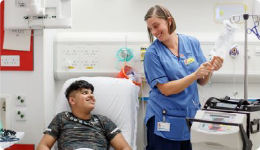Flat feet in children - information for parents and carers


The following terms can be used to describe a child or young person’s foot posture:
- Flat feet
- Pronated
- Over-pronated
- Pes Valgus
- Ankles that roll inwards
- Fallen Arches
They all essentially mean the same thing in terms of how the immature foot functions and develops. The following information will provide a better understanding of your child’s foot posture
What causes flat feet?
A pronated (Flat Footed) foot position is what we call a normal variant. It is the foot position almost all babies, toddlers and young children’s feet adopt. As some children grow (about 60%) they will develop arches in their feet when standing but others will remain “Flat footed” where the arch does not form until they stand on their toes. This means it is a normal foot position many people will adopt (around 40% of the population). The reason some people adopt this position is to do with the normal resting position of the joints of their feet. The position itself is nothing to be concerned about.
Will my child need treatment?
If your child does not have any problems associated with their foot position then they do not need treatment.
The majority of children between 1-5 years of age have “flat feet”. This is part of the normal growth and development of their feet.
However, if your child complains of foot, ankle or knee pain, has poor balance or poor stamina in walking, then an assessment may be necessary. Appointments may be virtual or face to face.
What are the treatment options?
Treatment for a symptomatic flat foot can consist of exercises and/or stretches for your child to do. It can also include orthotic intervention, generally in the form of insoles/ raises and/or footwear advice. Insoles will not change the shape/alignment of the foot; they work by altering the amount of work muscles/tissues have to do. This can help to reduce the symptoms.









